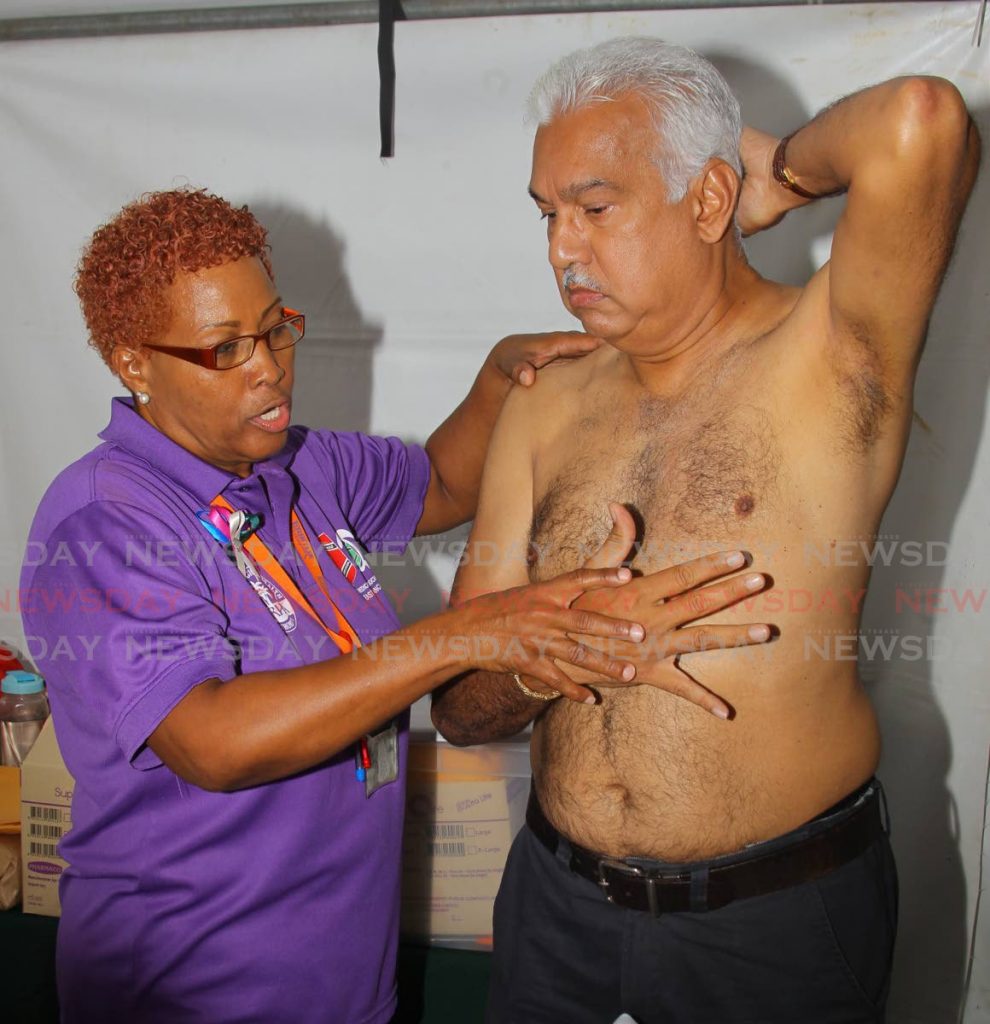Examining your breasts: What to look for

There are so many viruses and diseases to be vigilant about it can sometimes seem overwhelming, but as the most commonly-occurring cancer in women and the second most common cancer overall, breast cancer should always be a priority for women everywhere. The American Institute for Cancer Research recorded over two million new cases in 2018.
When it comes to cancer, any cancer, early detection is the key to survival, so knowing how and when to start screening is important.
Breast self examination
The TT Cancer Society recommends that every woman start checking her breasts from early teens onwards.
“Breast self examination helps women to become familiar with the normal look and feel of their breast, as well as checking for changes in the breast,” the society said.
General practitioner Dr Jaeon Bobb of the Nexus Clinic in Bon Air, Arouca offers advice on how to conduct a self examination.
You can start by lying down, as this helps to spread the breasts evenly over your chest, making it easier to feel for lumps or changes. Starting from the nipple, move your fingers slowly over the breast in small circular motions.
Be sure to check your armpits as well.
“The lymph nodes that breast cancer will spread to are under the armpit, so be sure to check there,” said Bobb. Lymph nodes are small, bean-shaped organs found throughout the body that help fight infection.
Knowing what your normal breasts look and feel like is important and self examinations allows you to become familiar with your body, making it easier, as you become more practiced, to detect changes.
Changes to look out for include, any new lump that may or may not be painful to the touch; unusually think areas; sticky or bloody discharge from your nipples; changes in the skin of your breasts or nipple, such as dimples or puckering; increase in size of one breast or one breast unusually lower than the other.
The mammogram
It is usually recommended that women should start screening for breast cancer from the age of 40. Bobb said this is usually the case for the average woman. He said, "If you do have a family member, like a mother or maternal aunt, who had breast cancer at a young age, you may want to consider screening ten years before the age they had it at. For example, if they (were diagnosed) at age 35, we recommend you screen as early as age 25.”
Knowing what type of breasts you have is also important. For example, Bobb said women with dense breasts may want to consider other forms of screening other that the mammogram or ultrasound. “MRI's of the breasts are more sensitive than a mammogram, or even a combination of the two could work.”
Bobb said breast cancer is different to a lot of other cancers, in that it doesn’t cause pain and you often do not realise the changes until it is advanced.
“The goal of screening is to identify changes at an early stage with the intent of early treatment as well as being able to conserve the breasts, which will depend on the size of your lump and the size of your breast.”


Comments
"Examining your breasts: What to look for"